These are a select collection of photographs taken within a period of 15 years, some from the time I was teaching in Egypt, some from November 2018 on my most recent tour. The woman with me at the Sphinx is Amal Elfar, a professional guide and Egyptologist of Friendly Planet. She led the group through the history of the country, the machinations of the pharaohs, the generals and the politicians, the intricacies of hieroglyphs on the walls, ceilings and pillars, the geology and geography of the land, the reliefs (high and low), and the obscure details that made the ancient past come alive.
Photography seems like a simple art — you aim and shoot — but there is a lot more involved in producing a good picture. Some of it is exposure, a bit is angle and perspective and a of course luck. The French master’s “decisive moment” comes into play too. If you do not click at the right second the montage is lost. Photographers are known to wait for hours or even days to capture the right shot. But a traveler like me who has only a passing opportunity cannot afford to wait. I have to move on. I depend to a great extent on luck and happenstance. That instant is often lost.
It was at sunset that these photos of the obelisk were taken. Up close the needle was just a light brown stone marble, but with the light of the sun shining at that particular time, it began to shine like gold. The light seemed to descend from the sharp top to the wide bottom of the stone, the way the sun’s rays are depicted in Egyptian art.
The vendors are everywhere. They won’t leave you alone, except inside the temples and the pyramids. “One dollar only!” You’ll hear them shout. If you look back, the man or the boy will follow you, even to your bus. When the boat is docked, you’ll hear the voices from outside. Back and forth between the vendor and the customer going on in the middle of the night. I bought several items from stores, not the sidewalk. Several scarves, a sweat shirt, a couple of t-shirts, 8 bottles of essential oils (from a factory), two papyrus scroll paintings (a “last judgment” and a “tree of life” — not the ankh but a tree with birds) with help from Amal, the guide. (I would not have bought the expensive items without her assistance.) I was close to paying for a green alabaster jar (like Mary Magdalene’s when she anointed Jesus in Bethany) but I noticed a tiny crack. My traveling companion bought several bags.
It’s partly the sheer massiveness of the temples that is so overwheming. My traveling companion said that she was impressed with the Great Wall of China, but this is something else. There is nothing comparable to it anywhere in the world. How were the blocks of stone transported? Where did they come from? How were they put together to make a whole? Millions were apparently cut and carved somewhere and moved to this spot. It is so difficult to imagine that people attribute the work to the Lost Continent of Atlantis or Extra-terrestials. Our guide explained it as tedious and patient work by ancient Egyptians. She actually sounded reasonable and objective. I could not fault her explanations.
He said his name was Captain Ahab, the owner of the felucca, the Egyptian sailboat plying the tourist trade on the Nile in Luxor. I was skeptical but did not respond except to say to myself, Yes, and you can call me Ishmael. That’s him in the photo taken at sunset. He showed me how to pilot the boat and asked me if I wanted to take over. I did.He walked over to the edge of the boat, dipped into the Nile and brewed me Egyptian tea (usually made of dried flower like rose hip or hibiscus). I was reluctant to say no but I stammered something that was intended to mean negative. Shortly thereafter I saw the most beautiful sunset in my travels … until I saw the sunset on Inle Lake in Myanmar 10 years later. At Cataract Hotel in Aswan, while having High Tea on the terrace, I expected to see another beautiful sunset. I managed to take 2 shots before my camera battery gave out. The sunset did not rival Inle Lake’s but it was beautiful nonetheless. My conclusion is that each sunset is different. The water adds to the quality of the experience, so does the desert.
What do these reliefs and hieroglyphs mean? An Egyptologist like Amal Elfar, Friendly Planet guide, can explain them. But a tourist traveling alone will most probably not understand the images and the hieroglyphs. What are those etchings that look like eggplants in the temple at Dendera? How about those 7 false doors in Luxor? Sadly, Amal wasn’t around the first time I traveled in Egypt. She could have shed light on them. She said that the third photo was a formula for essential oil or perfume while the fourth is the name of Ptolemy in hieroglyph. How about that wall behind me in the fifth photo?
You see interesting people everywhere. Sadly, there is often no time to talk and know them. It’s my experience traveling. Ships passing each other on the Nile at night. One of these people was the Whirling Dervish whose performance was dizzying and stunning. I have seen Whirling Dervishes a few times before but never like this one. He was not just spinning around, he was actually dancing and using 3 layers of colorful skirts in a dazzling exhibition of terpsichorean dexterity.I wanted to ask him about how old he was when he started training, with whom, and what did he feel while spinning like a top in dizzying speed? I also wanted to ask those young girls about their education and upbringing. What do the 7 women in the photo think about gender equality, women’s rights and the Me, Too Movement? How about that old man in the market? Was he perhaps an obscure sage who carries secret family transmissions? There is almost always the problem of language. I tried to communicate with the staff in the boat but none of them spoke English and I did not speak Arabic, Coptic or Nubian. We should not presume that the rest of the world speaks English.
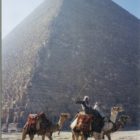
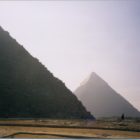
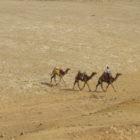
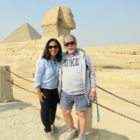
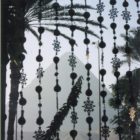
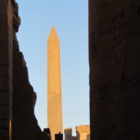
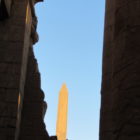
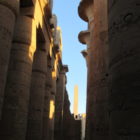
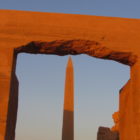
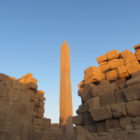
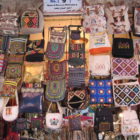
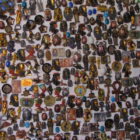
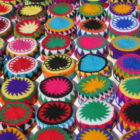
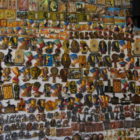
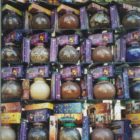
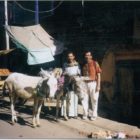
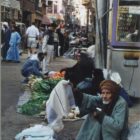
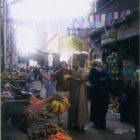
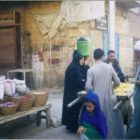
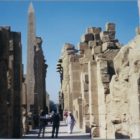
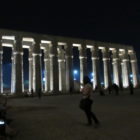
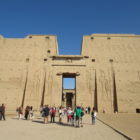
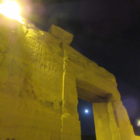
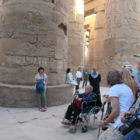
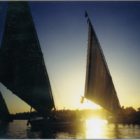

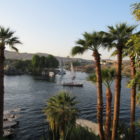
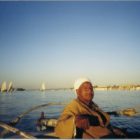

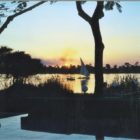
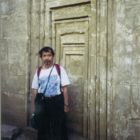
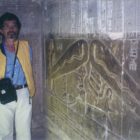
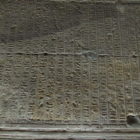
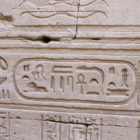
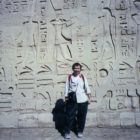
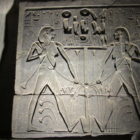
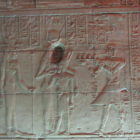
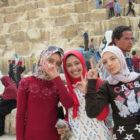
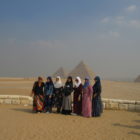
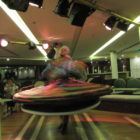
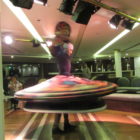
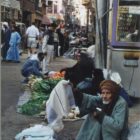
Rene, enjoyed your EGYPTIAN newsletter…there is an ancient esoteric/occult knowledge that exists from the ancient past.. Egypt is the source of most theory on immortality and esoteric practice, but with connections with ancient cultures and religions and groups. Much of this is said to have been taken from ‘Atlantis’…keep up the good work. Halford
Hal,
I’ve had mystical experiences in Egypt, since I first traveled there (both in Cairo and Luxor) in 2001. In fact, I met one of the Guardians of the Temple in Karnak who demonstrated an empowerment technique that is similar to Xiao Zhou Tian/Small Heavenly Circle of Daoism. I’ll describe what he did; there is no space here for it. The ancient knowledge, attributed to the God of Wisdom, Thoth, is partly contained in the Emerald Tablet and partly in the Egyptian Book of the Dead and of course in the reliefs on the pyramid and temple walls. The Greeks appropriated the knowledge and called him Hermes. You can read possibly the latest translation and commentary on the Pyramid Text in the book “The Dreaming Moon of the Mind” by Susan Brind Morrow.
Thank you for writing. I am now in Singapore. I will be back in the Philippines this Saturday Feb 9 and in the US Feb 12. I was in Batanes Jan 24-29. If you are in NY or PA, please tell me. I can drive up to see you for a reunion.
Blessings!
Rene